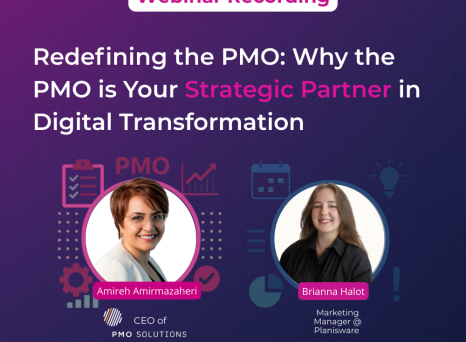Why would Stage-Gate® be any better than other methodologies get started with building your PMO's project management processes ?
This is the second part in a multi part series. Read our previous article “Kickstart your PMO processes with the Stage-Gate methodology”.
Reason #1: Stage-Gate brings discipline to Project Execution
Project execution can be a fairly chaotic process, especially when the project aims to bring about an element of change, such as new product development, or software deployment IT projects.
Stage-Gate provides a complete, structured and transparent process, that is visible to everyone:
- Transparent : with Stage-Gate, projects and their status (état d'avancement) are visible to all, which allows to build a clearly understandable roadmap for management, stakeholders, and even customers.
- Structured : because the Stage-Gate process is structured, it helps define the duties of project managers and provides them with a map of the what they are supposed to do, and the results they should arrive to.
- Complete : Stage-Gate was created from the observation of companies among the most successful at project execution and innovation. It embodies the lessons and best practices learned from these companies, so it ensures that there are no missing steps in the project execution process, and that no critical errors are made.
Reason #2: Stage-Gate works for pretty much all types of projects
Whether your project involves 1000 people or just 10, 5 locations throughout the world or just the one, Stage-Gate offers a process that works.
Similarly, your project can be about designing a new car, implementing a new software system, putting together a space rocket, or launching the next life-saving drug.
No matter the industry or the type of project (IT, product development, internal processes…) Stage-Gate will work equally well to structure and help deliver the project.
Reason #3: Stage-Gate is straightforward and easy for everyone to understand
Unlike other methodologies, Stage-Gate does not require complex vocabulary or counter-intuitive concepts. In fact, it meshes remarkably well with our natural inclinations: for instance, when each of us works on something, it is almost a reflex to step back every so often assess our progress, and the quality of what we have done.
This in turn makes change management significantly easier: you are not asking people to trust a complex, sometimes mysterious process, but a method based on logical and structured steps.
Reason #4: Stage-Gate is flexible and easy to implement
Because of its modular structure, Stage-Gate is a very flexible methodology that can be adjusted to a variety of circumstances. From the simple 3 stages/2 gates Essential Stage-Gate to the full-blown 5 stages/4 gates Enterprise Stage-Gate, you can design the process that works for your particular environment.
You can even use several different Stage-Gate setups within the same company, entity or department. Some of our customers actually have up to a dozen different models that cater to the needs of different project profiles (small vs. large, with different regulatory requirements etc.) that coexist happily.
Stage-Gate also scales particularly well: you can start with a simple model, applied to a single department or type of project. Then gradually work up to a global process that handles more complex projects until the process is a applied to the whole company. In actual fact, that's actually the way many of our customers have implemented the methodology.
Reason #5: Stage-Gate naturally mitigates risk
Several aspects of the Stage-Gate methodology offer, by construction, a way to mitigate some the risks inherent to projects:
- Stage-Gate charts the whole project execution process. This in turns ensure that no step is omitted. The mandatory deliverables at the end of each phase acts as a supplementary safety mechanism to enforce that.
- One of the basic principles of Stage-Gate is incremental commitment. So, when a project is started, the true commitment is to the first phase of the project which is, in most cases, the cheapest one (ideation / concept). The next phase (prototyping) requires more resources, but remains one of the less onerous steps. By then, a lot of the main obstacles to a successful execution of the project have been identified, and plans to deal them can be made.
- A consequence of the previous point is that the full amount required for the project is only committed when you get to the last step of the Stage-Gate process, ie Launch.
- By construction, gates naturally provide a chance to review the alignment of the project with the company's objectives or strategic themes, and make the necessary adjustments to ensure that the final result will not be at odds with the company or the department's strategy.
- Often companies will include financial information as part of the deliverables required at each gate, getting more precise as the project progresses. This means that the impact of the project on the company's financials will be considered early in the process, and the balance effort / return on investment can be considered early on.
Having looked at the benefits of Stage-Gate, we will consider the main criticisms levelled at the methodology, and what it means for your PMO.
How can a company mitigate risks in new product development projects?
New product development projects are among the riskier projects that a company may engage into. In this interview, Robert Cooper, father of the ubiquitous Stage-Gate methodology, discusses strategies that can help reduce a company's exposure to new product development risk.
Stage-Gate® is a registered trademark of Stage-Gate Inc.


